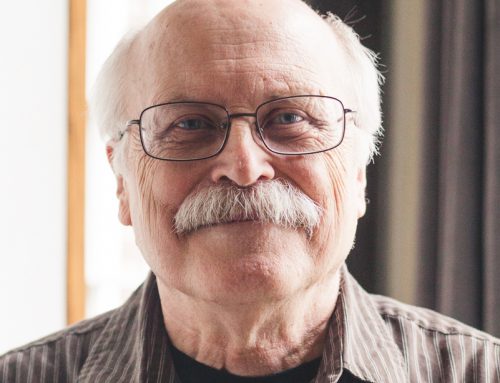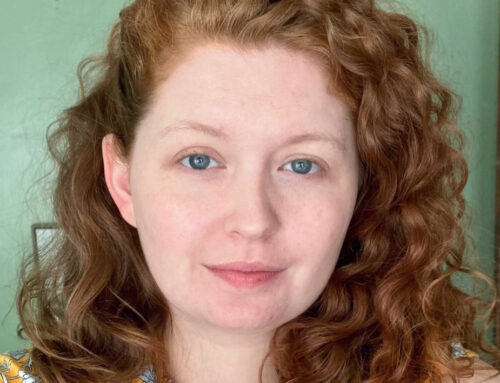Adapted from a talk given at Reformation Fellowship, a church in Eugene, Oregon, on December 23, 2012.
Perhaps there is no better symbol of the difference between what traditional Christianity claims and what the Bible actually teaches than the Christmas story. The story as told in Christmas cards, Christmas carols, nativity scenes, and all things Christmas is significantly different story from the story the Bible tells. We do not readily see the difference because so few of us Christians actually focus on what the Bible says. We glance at the Bible and assume it must say what Christianity tells us it says. That Christianity gets the Christmas story wrong is not a serious problem, but the fact that it gets the Christmas story wrong is emblematic of something that is serious. Traditional Christianity, as it has come down to us, is not ultimately grounded in the teaching and revelation of the Bible; it has been more than willing to make things up as it goes along. When it comes to the gospel message itself, making things up involves some significant and serious mistakes.
My purpose here is to tell the Christmas story that the Bible tells. I will leave it to you to compare and contrast it with the Christmas story our traditions tell. The Bible’s story must be reconstructed from two accounts: the Gospels of Matthew and Luke. Luke, it would seem, relates information that must have come from Mary, perhaps even directly from Mary. Matthew appears to relate information that has come from Joseph—though I have no clue by what path that information was preserved. Neither Mark’s nor John’s Gospel contributes anything to our understanding of the events surrounding the birth of Jesus.
The story begins with a childless couple, Zacharias and Elizabeth, who were beyond child-bearing years and had been pleading with God to give them a child. They lived in the hill country of Judah. Zacharias was a priest belonging to the division of Abijah. Elizabeth came from the priestly family of Aaron. Both were righteous in God’s eyes, blameless in their commitment to God’s Law.
Priests, required to go to Jerusalem to perform the priestly duties in the temple, took turns by division. In the inner recesses of the temple, an area called the “Holy of Holies” was presumed to be where Yahweh was present. Just outside the Holy of Holies was the “Holy Place,” an area separated from various public areas and outer courts where worshippers came to worship. Only the priests were allowed to enter the Holy Place, where an incense altar stood just to the side of the entrance into the Holy of Holies.
The time having come for the division of Abijah to go to Jerusalem, Zacharias traveled there to fulfill his priestly obligation. One day it fell to him by lot to perform the ritual of entering the Holy Place to burn incense to Yahweh on the altar. (Presumably, this ritual was meant to signify the offering up of prayers to Yahweh.) As a crowd of worshippers was gathered in the courts outside waiting for Zacharias to return, the angel Gabriel suddenly appeared to Zacharias. Standing to the right of the incense altar, deep in the shadows of this inner room where no one outside could see him, Gabriel told Zacharias that his petitions to God for a child had been heard. Miraculously, his wife Elizabeth was going to have a son. Not just any son. He would be a man with a special role: a prophet, who, by calling many Jews to repentance, would prepare the way for the coming Messiah. Furthermore, the angel Gabriel instructed Zacharias to name this son “John.”
Since the announcement seemed too good to be true, Zacharias was unable to believe this promise on Gabriel’s word alone, and so he asked the angel to verify it. The verification, Gabriel told him, would be Zacharias’s inability to speak; he would be struck dumb, and his muteness would continue until what the angel had announced had come to pass. When Zacharias came out of the Holy Place, he could not tell the worshippers outside what had transpired. Using sign language, he managed to communicate enough for them to realize that he had had some sort of vision. Zacharias finished the days of his rotation as priest in Jerusalem and returned home. Soon afterward, his wife Elizabeth became pregnant and kept herself secluded for the next five months.
At this time, up north in Galilee in the village of Nazareth, there lived a relative of Elizabeth’s, a young woman named Mary. (We are not told how closely they were related, but they were kin.) Mary was betrothed by contract to marry a man named Joseph, who was in the line of King David. By rights, if the dynasty of David had still been in power, Joseph would have been in line to be the next king of the Jews. But, alas, the dynasty of David had been reduced to little more than a mocking memory of its past greatness. As it was, Joseph most likely made his living as a builder.
In the sixth month of Elizabeth’s pregnancy, the same angel that had appeared to Zacharias in the temple in Jerusalem, Gabriel, now appeared to Mary in Nazareth. Gabriel told her that, though she was a virgin, she would conceive a son by the miraculous working of the Spirit of God, and she was to name him “Jesus.” This son, Gabriel predicted, would be called the Son of God, for he was the long-awaited son of David who would fulfill all the promises that God had made to King David so very long ago. This child whom Mary would bear was the one who would reign forever over the everlasting kingdom of God. Furthermore, Gabriel told her that Elizabeth, her kinswoman who was too old to have a child, was miraculously in her sixth month of pregnancy.
Directly, Mary traveled to the hill country of Judah to visit Elizabeth. When Mary greeted Elizabeth and immediately related what the angel Gabriel had told her, the baby John leapt in Elizabeth’s womb; and Elizabeth, by the working of God’s Spirit, was granted a clear understanding of the implications of Mary’s announcement. Elizabeth cried out with joy, exclaiming what an honor it was to be visited by the mother of her Lord and commending Mary for her willingness to believe what had been promised to her. Then Mary responded by proclaiming herself one more example of God’s proclivity to have regard for the lowly while bringing down the proud and superior. And then she highlighted the fact that the son she had conceived was dramatic evidence of the faithfulness of God to his promises, for her son was destined to fulfill God’s longstanding promise to Abraham and his descendents.
Eight days after John was born, at the ritual of his circumcision, those who were officiating were about to name the child “Zacharias,” after his father. But Elizabeth objected and instructed them to name the child “John.” Surprised at the unconventionality of not naming the child after some relative, they asked Zacharias what he wanted to name the child. Zacharias asked for a tablet and, to the astonishment of everyone, inscribed on it, “His name is John.” Immediately Zacharias’s speech was miraculously restored, and he began to proclaim praises to God. Then, at the supernatural illumination of God’s Spirit, Zacharias prophesied. He began by proclaiming that John’s birth signaled the redemption of the people of Israel, for it meant that God, in fulfillment of longstanding promises, was about to send the Messiah, who would free the people of Israel from their enemies so that they might live as God’s people and serve him forever. Then, addressing the child John directly, he prophesied that John’s role would be to announce the coming Messiah and to prepare the way for him. John would proclaim to Israel the possibility of salvation through the mercy of God and through the forgiveness of sins to all who repent. Mary, it would seem, remained with Zacharias and Elizabeth until John’s birth and was there to hear all that Zacharias prophesied that day.
Soon after the birth of John, Mary, now about three months pregnant with Jesus, returned to her home in Nazareth. Sometime after her return to Nazareth (the Gospel accounts don’t tell us how long), Joseph got word that he must relocate to Bethlehem, his ancestral home. Augustus Caesar, the Roman emperor, had called for a census to be taken of the whole empire. Quirinius, the governor of Syria, had instructed every Jewish male (if not everyone in his realm) to return to his home city to register—that is, to enumerate to some government official all the members of his household and, likely, to declare all of his assets. Since Joseph was an ancestor of David, his home city was Bethlehem, the City of David. Mary, being betrothed to Joseph, was likely required to go with him to be officially registered as part of his household. There were no computers in those days, and so to create an official written registry of all the households who traced their ancestry to Bethlehem would likely have taken many weeks, perhaps even many months. The housing in Bethlehem could not possibly have accommodated all the households who had been required to return. Joseph and Mary were relegated to a structure, perhaps a cave, normally used to house livestock. They were not there for just one night. More than likely they were required to camp there for weeks or months.
Presumably, it was during their sojourn in Bethlehem that Joseph first became aware that Mary was pregnant. Faced with a moral dilemma, Joseph decided that, as an act of mercy toward Mary, he would quietly and secretly dissolve their contract to marry. But, having determined to do so, he was visited in a dream by an angel of the Lord, who instructed Joseph not to hesitate to take Mary as his wife. Mary had not been immoral; she had conceived a child by the miraculous working of the Spirit of God. And repeating what Gabriel had instructed Mary, the angel told Joseph to name the child “Jesus,” for he would “save the people from their sins.” [“Jesus” is the English translation of the Greek “Iēsous,” which is a translation of the Hebrew name “Yeshua” (or Joshua), which means “Yahweh is Salvation.”] Awaking from his dream, Joseph did just as the angel had instructed him. He married Mary and made her his wife. But though he married her, he kept her a virgin until after she had given birth to her son.
Joseph and Mary (now Joseph’s wife) were still in Bethlehem when the time came for Mary to deliver her child. She delivered the baby in the shelter where they had been camping. Since the shelter had been intended for livestock, it had a feeding trough, which Mary used as a bed for the baby, swaddling him in cloth and laying him there. Joseph named the child “Jesus,” just as the angel had instructed.
During the night immediately following Jesus’ birth, an angel of the Lord, bathed in dazzling bright light, suddenly appeared before some shepherds who were watching over their flocks in some fields near Bethlehem. The angel announced the good news to them, “A Heroic Deliverer, the Lord Messiah, has been born today in the City of David. You will know which baby he is because he is the one lying in a feeding trough.” Right on the heels of the first angel’s announcement, a whole chorus of angels appeared along with the first angel and called out something like this: “Glory to God in the highest realms. The possibility of peace with God has appeared upon the earth. The possibility of finding favor with God is now among men.” Once the angels had disappeared, the shepherds decided to go to Bethlehem and lay eyes on this Messiah that the angels had announced. They found the baby Jesus, lying in the feeding trough just as the angel had said. They told Joseph and Mary all that the angels had said to them. Mary, in particular, took to heart all that had happened and all that had been said about her son.
Time passed. Mary, Joseph, and Jesus camped in Bethlehem until, finally, Joseph and Mary managed somehow to move into a house. Perhaps the population of Bethlehem had begun to shrink as the census wound down to completion. In any case, they finally obtained a house where they could live.
Many weeks or months later (we are not told exactly how long), a number of sages from some land to the east arrived in Jerusalem. (They could have been from Babylon, from Persia, or even from Arabia. We don’t know.) The sages began to inquire about the location of the newly born king of the Jews. They explained that, as sages schooled in astrology and a knowledge of the stars, they had observed a star that signified to them the birth of a king among the Jews. They had traveled to Judaea to do homage to this newborn king.
King Herod the Great, the king reigning over the Jews at that time, was greatly troubled by this unexpected turn of events. He gathered together his Sanhedrin and inquired of them where the Messiah was supposed to be born. The experts in Torah informed him that the Messiah was to be born in Bethlehem. Herod told the sages that the king was prophesied to be born in Bethlehem, and, in secret, he determined from the sages the exact time that the star signifying the new king’s birth had appeared to them. Then he sent the sages to Bethlehem to locate the child, instructing them to return to Jerusalem and report to him where the child could be found. His intention, so he told them, was to go and do homage to the child himself. As they traveled to Bethlehem, much to their delight, the star that signified the birth of this new Jewish king was once again visible in the sky. Its motion and location in the sky, discernible to them as skilled astronomers, somehow confirmed that Bethlehem was where the child would be found. When they got to Bethlehem, they entered the house and saw the child Jesus with his mother Mary. (At the time of this visit, Jesus was between a few months and a couple of years old. We don’t have sufficient information to be more precise.) These sages bowed to the ground and did homage to Jesus, and then they presented him with gifts fit for a king: gold, frankincense, and myrrh. Having been warned in a dream not to return to Herod, these sages departed the country by a route that circumvented Jerusalem.
After the sages had left Bethlehem, an angel of the Lord informed Joseph in a dream that Herod wanted to destroy the child, and he instructed Joseph to take Mary and Jesus to Egypt and to remain there until he was told otherwise. Joseph woke that very night and left for Egypt, taking Mary and Jesus with him.
Back in Jerusalem, Herod the Great became outraged when he realized the sages had not done as he had instructed them. He sent his soldiers to Bethlehem, and, per Herod’s orders, they slew every male child in the vicinity of Bethlehem who was two years old or younger. (Herod had based his orders on the time that the star had appeared to the sages.)
A year or so later, Herod the Great died. When that happened, an angel of the Lord once again appeared to Joseph in a dream, in Egypt, and told him that he could return to the land of Israel because those who had wanted to kill Jesus were dead. So Joseph traveled back to the land of Israel with Mary and Jesus. Upon his arrival, he learned that Archelaus, Herod the Great’s ruthless son, was now reigning over Judaea, and Joseph was afraid to go there. Being warned once again in a dream, he did not remain in Judaea but traveled to Galilee instead. He chose to return to Nazareth—the village he had left nearly three years earlier—and to settle there with Mary and Jesus. Jesus did not move from Nazareth until he was about thirty years old.
+ + + +
What I have recounted is, more or less, the biblically correct Christmas story—the story as Matthew and Luke told it. No doubt, you see some obvious departures from our Christmas traditions. Obviously, our nativity scenes with shepherds and wise men gathered together around the newborn Jesus in a manger is a historically and biblically impossible scene. Clearly, the magical picture of a star descended to the ground, standing above a wooden barn with a beam of light pointing to the place where Jesus lay is not what Luke had in mind. The familiar story told in Christmas traditions is likely more fun and more magical than the true account. But it is not true. Now, in and of itself, a historically inaccurate Christmas story is relatively trivial and harmless. But if we have the Christmas story wrong, what else do we have wrong? Is the Jesus of Christian tradition the same Jesus that a careful reading of the Bible discloses to us? Is the role and significance of this man Jesus as it is taught in the Christian tradition the same as that the Bible teaches us? Is the good news that centers in Jesus the same good news in Christian tradition as it is in the Bible? I submit that the answer to each of these questions is ultimately “no.” Just as our Christmas cards, Christmas carols, and Christmas pageants have scrambled and misrepresented the true history of the birth of Jesus, so traditional Christian doctrine and theology have scrambled and misrepresented the gospel, the promises of God, the worldview present in the Bible, and the message taught by the Bible.
I hope that we all will respond appropriately to this sober fact. The story of Christmas is the story of the coming into history of the most important person in the entire story of created reality. It is the story of the beginning of the most important truth of human existence: the way God has provided for you and me to attain everlasting Life in his kingdom. I hope that we all will focus on what the Bible teaches us about this man Jesus and what he means to us. I hope that we will never grow weary of diligently, courageously, humbly, and intelligently seeking the truth about what he taught.
The Jesus who came into being over two thousand years ago is coming back. Judging from the accelerating darkness outside, perhaps he is coming soon. When he comes, I hope that none of us will experience shame at having neglected to master what he came and taught us the first time he was here.






